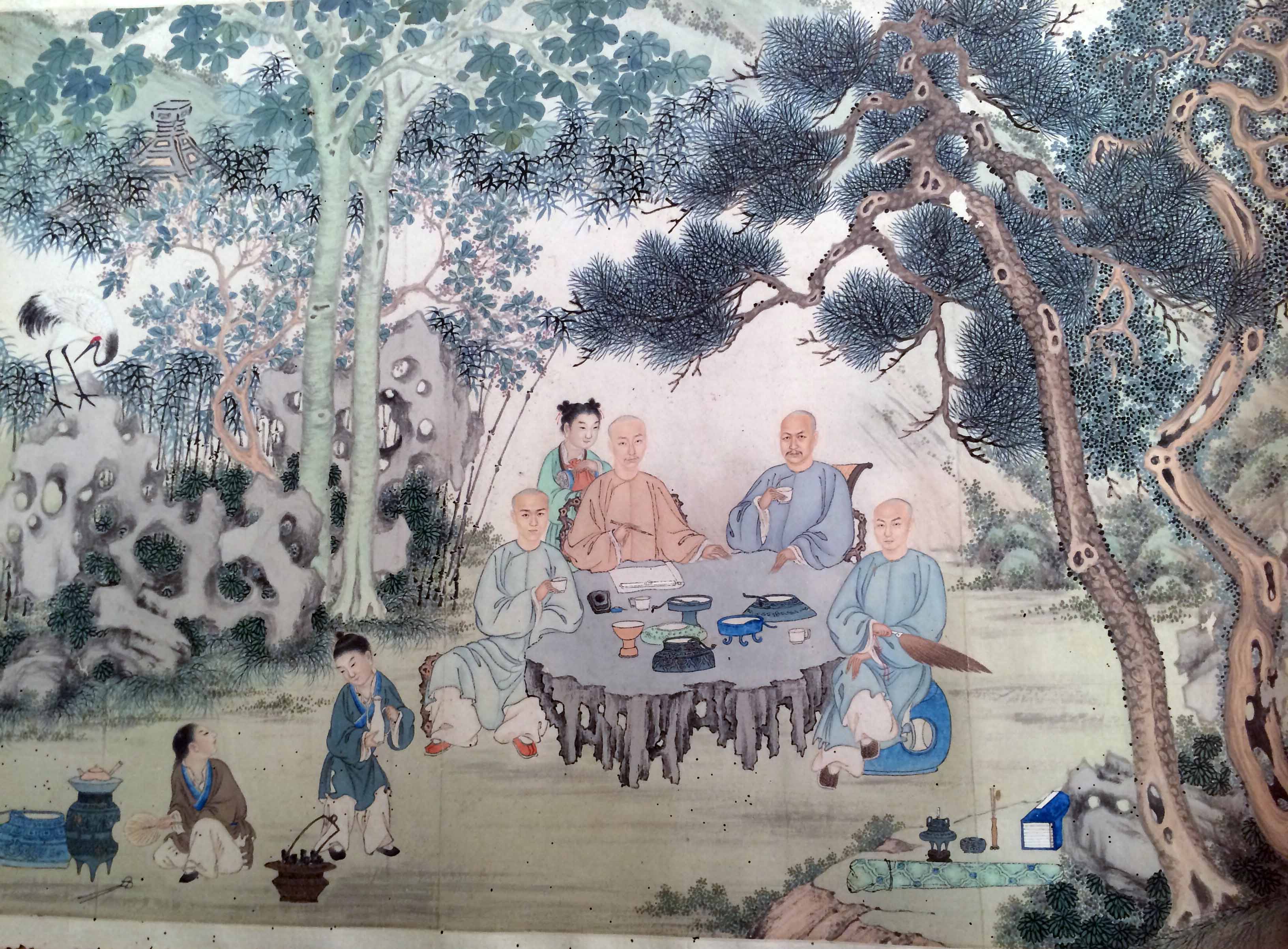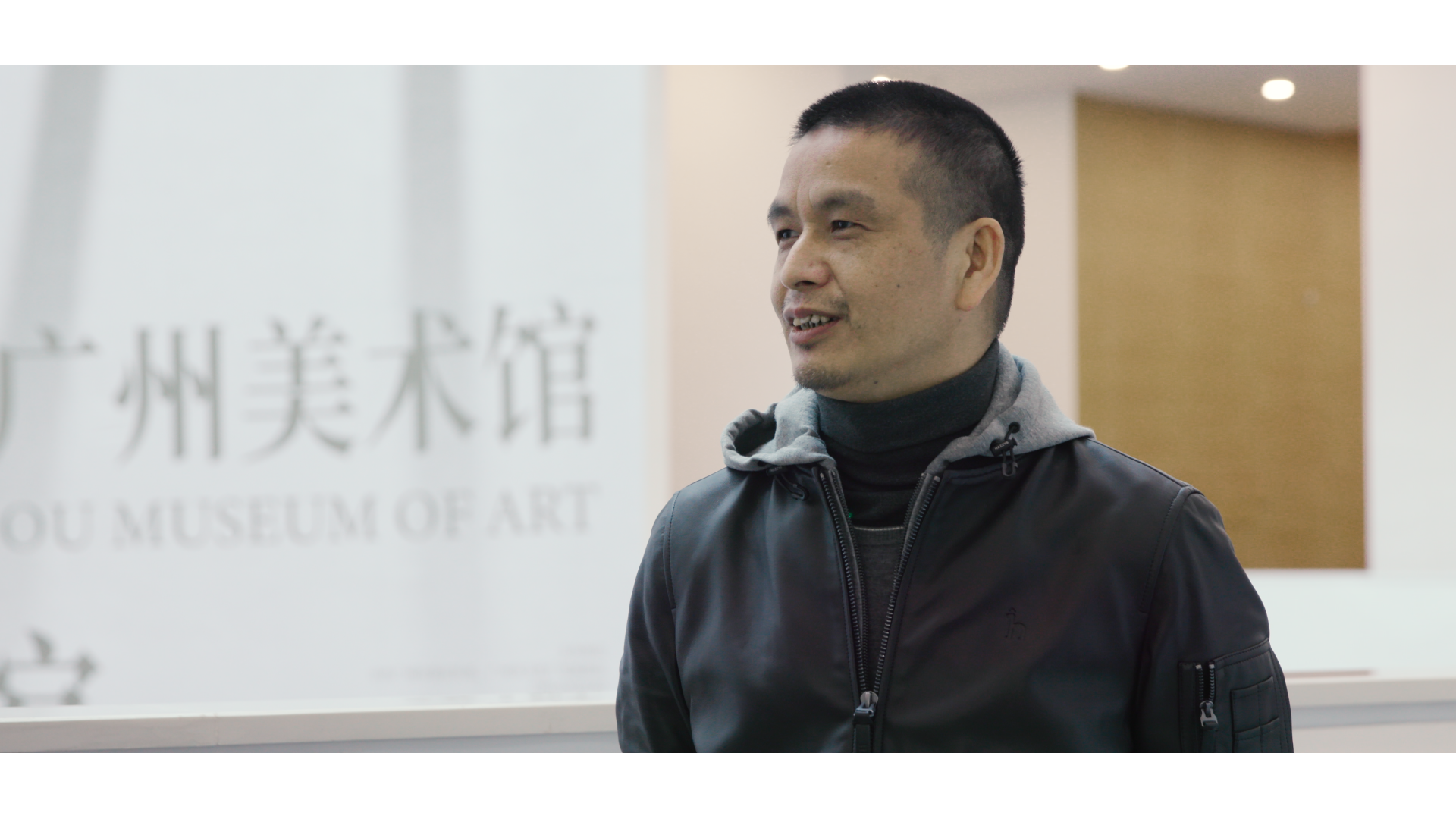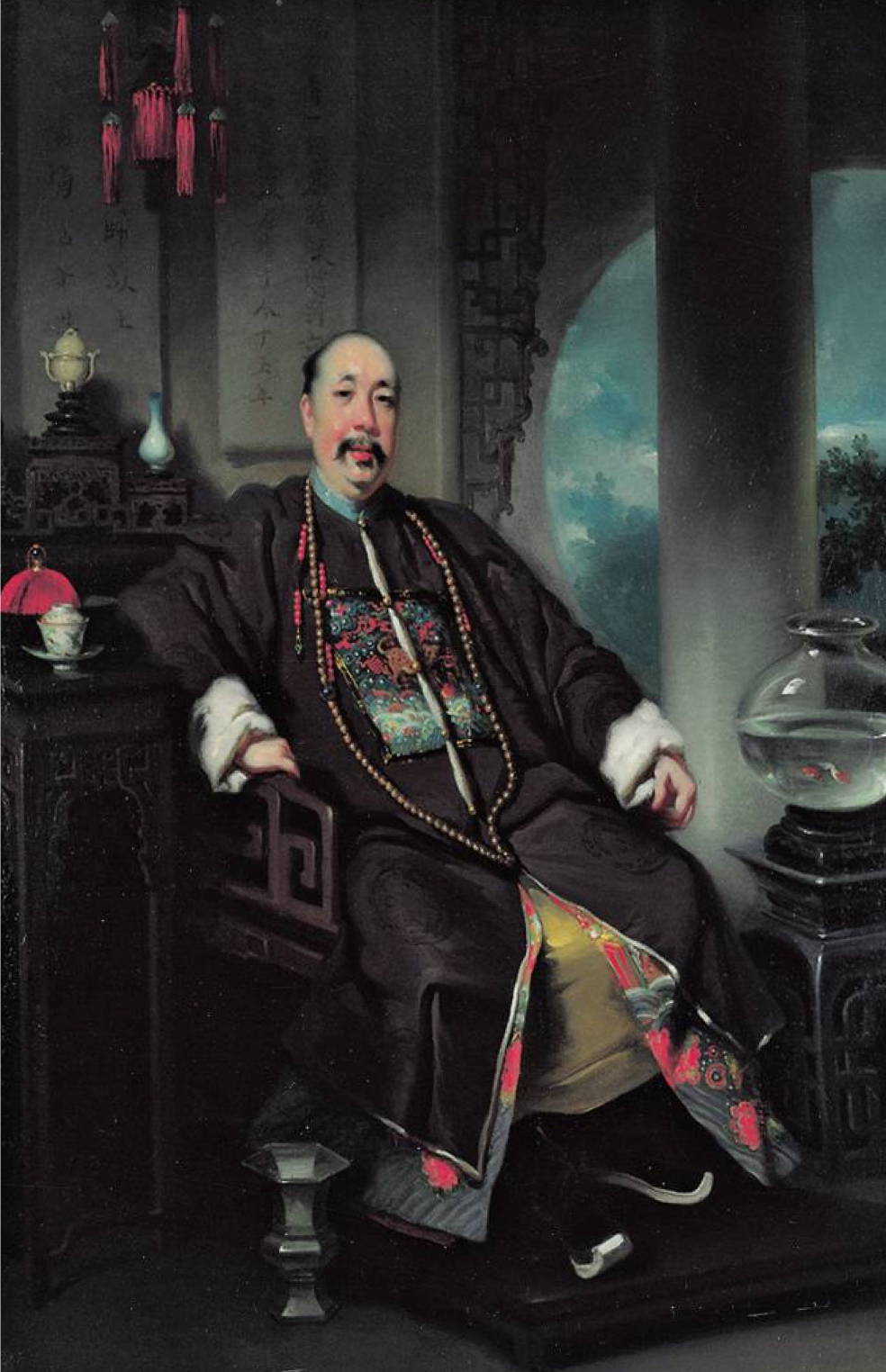
During the Qing dynasty, the Thirteen Hongs in Guangzhou became a bustling hub, attracting a multitude of foreign traders due to the unprecedented prosperity brought about by the“Single Port Trade”system.

The captivating artwork is the 200-year-old masterpiece,“Family Portrait of Lu Wenjin,”currently housed in the Guangzhou Museum of Art. This painting immortalizes the affluent lifestyle of Lu Wenjin, also known as MowquaII, a distinguished figure in the Thirteen Hongs who once led the prestigious Guangli Trading Company - one of the“Four Great Trading Firms.”The scene depicts Lu Wenjin, the goodman of the family, seated in a commanding position and holding a brush as if being ready for writing.
 Apart from“Family Portrait of Lu Wenjin,”Lu Wenjin’s legacy includes several realistic portrait oil paintings. One notable piece is“Foreign Trade Merchant,”an artwork crafted by British painter George Chinnery. In contrast to the traditional Chinese painting style seen in“Family Portrait of Lu Wenjin”, this portrait exudes a heightened realism.In this portrayal, Lu Wenjin was attired in ceremonial garments, adorned with court beads, and his headdress rested beside a tea table.
Apart from“Family Portrait of Lu Wenjin,”Lu Wenjin’s legacy includes several realistic portrait oil paintings. One notable piece is“Foreign Trade Merchant,”an artwork crafted by British painter George Chinnery. In contrast to the traditional Chinese painting style seen in“Family Portrait of Lu Wenjin”, this portrait exudes a heightened realism.In this portrayal, Lu Wenjin was attired in ceremonial garments, adorned with court beads, and his headdress rested beside a tea table.

In two distinct genres of painting, the affluent merchant Lu Wenjin presents starkly different personas. Through portrait oil paintings, he seeks to convey to his audience - Western partners - the belief that he possesses the capability to communicate with higher officials and effectively manage wealth, establishing himself as a reliable and long-term partner.Contrastingly, in the character portrayal within the painting“Family Portrait of Lu Wenjin,”Lu Wenjin appears refined and amiable, surrounded by family warmth, showcasing a prestigious lineage and a commendable family ethos. This duality in depictions reflects Lu Wenjin’s strategic efforts to solidify his self-image and strengthen his social network.

Source:Yangcheng Evening News
【视频】清代粤商的“腔调”与“偶像包袱”|名家说名作·粤藏于海⑥
清代广州十三行一带,来华贸易的外国商人大量积聚,“一口通商”制度为这里带来空前的财富积累。
收藏于广州艺术博物院(广州美术馆)、创作于两百年前的《富山怡乐图》定格了富商卢氏家庭文酒聚会的场景。一家之主卢文锦端坐上位,他手执毛笔似乎正准备书写。卢文锦即“卢茂官”(MowquaII),是赫赫有名的清代十三行行商,曾一度执掌“四大商行”之一的广利行。
除《富山怡乐图》外,卢文锦还有不少写实的肖像油画存世。《行商茂官》是英国画家钱纳利为卢文锦绘制的一幅肖像油画,相比于国画《富山怡乐图》,这幅画更加写实。画面中,卢文锦身穿朝服,胸前佩戴朝珠,他的顶戴花翎放在一旁的茶几上。
在中、西两种不同类别的绘画里,富商卢文锦呈现了两种截然不同的形象。通过肖像油画,他需要他的观众——洋人合作伙伴们相信,他完全拥有与上级官员沟通以及经营财富的能力,是一位可以长久合作的伙伴。而人物画《富山怡乐图》里的卢文锦,则文质彬彬,兄弟手足相亲,拥有显赫的家世和良好的家风。这是卢文锦出于对自我形象的树立及其社会关系网络的巩固。
总策划:杜传贵 林海利
总统筹:孙爱群 陈桥生
统筹执行:邓琼 吴小攀 朱绍杰
文|记者 文艺 朱绍杰
视频出镜||罗奇 周欣怡 潘迁
图|文三原
翻译|刘佳慧
-
Lighting the wok for nostalgic Chinese New Year snacks
2024-02-06 22:48:28 -
Video:The strategic image of Cantonese merchant in the Qing dynasty|Master’s talk - Cantonese Collections
2024-02-06 22:46:31 -
Video|Celebrate New Year of the Dragon with Chinese students abroad
2024-02-06 22:46:34 -
Video|Exploring parks and cultural halls to discover Chinese New Year flavor in local intangible cultural heritage
2024-02-06 14:36:25






